You are currently browsing the tag archive for the ‘Saraswathi’ tag.
Around this time every year, I have made a post about Tyagaraja. He was born in the town of Tiruvaroor on May 4th, 1767 and after a very musical life, he passed away on January 6th 1847.
Tyagaraja is known for his more than 800 compositions, many of which are in ragas he created. It is sufficient to state that there are very few composers who can match him in the variety and scope. Therefore you can say there is a composition of Tyagaraja for any level of musical maturity – they range from very simple to very complex.
As a homage to this composer, I composed Varna, set in 9 ragas that Tyagaraja brought to life. A Ragamalika (ರಾಗಮಾಲಿಕಾ, ರಾಗಮಾಲಿಕೆ) – is a type of composition that is quite popular in South Indian classical music. As the name suggests, such a composition is composed in multiple ragas, and so the name Ragamalika, i.e. “garland of ragas”.
As a composition type, they seem to gained popularity from the early 18th century. Muttuswami Dikshita’s father Ramaswamy Dikshita, and his guru Veerabhadrayya are some of the earliest Ragamalika composers.
Then a question may arise about various Purandara Dasa compositions that are sung as Ragamalikas – Unfortunately we have lost most of original structure of haridasa compositions from the 15-18th centuries. And their ragamalika form is more than likely to be of recent origin. But there is some food for thought. Why didn’t Haridasa’s who composed suLAdis , which are compositions in multiple tALas (tALamAlike), think of composing in multiple ragas? They my indeed have, but we can’t prove that beyond doubt/
There are several ragamalika varnas that are very popular on the concert circuit. Valaci Vachci ( in 9 ragas, and hence mostly called ‘the’ Navaraga Malika varna) , and the Ghanaraga Malika Varna are very well known. There have been other ragamalika Varnas as well. And I hope this composition of mine will be a good addition to those.
The sahitya of this AditALa varNa is as follows:
Pallavi : namastE shAraDE dEvI kAShmIra puravAsinI (rAga vAgadhIshwari)
Anupallavi : tvAmahaM prArthayE nityam vidyA budhim cha dEhimE ( rAga bindumAlini)
The Chitte swara is in : rAgas Andolika and Rasaali
Charana: saraswatI sahitE tyAgarAjApte ( rAga saraswati)
The ettugade swaras are set in rAgas jayantashrI , saraswatI manohari , chandra jyOti and ranjani.
As you may see, the pUrvanga of the varna takes from a traditional stuti of Goddess Sarawathi. The Charana describes her as one who is dear to Tyagaraja.
Here is a renditions of the varna, by Benagluru based artist Uma Kumar:
Another rendition by New Hampshire based artist Ragini Sanath:
Your feedback on the composition is welcome!
-neelanjana
This article by archaeologist Andrew Lawler has appeared in the January 2013 issue of the Archaeology magazine. According to this article, the so-called Buddhist stupa in Mohenjo-Daro might have been a structure from much earlier than Buddhist times. Read the article in the following link for more details:
156909248-Mohenjo-Daro-s-New-story-Andrew-Lawler-2013
It’s almost one century since the remains of Mohenjo-Daro were unearthed for the first time – but it certainly it still holds many secrets of Indian civilization!
-neelanjana
In my post a few months ago, I had written about why Indus Valley Civilization be better termed as Saraswathi-Sindhu Civilization, and it’s relation with the people who composed the Vedas.

Recently, I listened to a lecture of Dr R Ganesh on the topic of the Myth of Aryan Invasion – A myth that was the brainchild of colonialists of the 19th century to best suit their beliefs of those times – but unfortunately carried down even to this day, when all the scientific evidence shows otherwise.
This lecture was held at Rasadhwani Kalakendra, Benagluru, and I thank the organizers for agreeing to share the recording. The lecture is in Kannada and runs for about two hours.
Here is a link to to download the lecture for your listening pleasure. : The Myth of the Aryan Invasion of India by Shataavadhani Dr R Ganesh
If you have Google Chrome Apps such as DriveTunes or TwistedWave, you can listen to the lecture online as well from the same link.
You can get in touch with the people at Rasadhwani Kalakendra at rasadhwani.kalakendra@gmail.com, or by going to their Facebook page (https://www.facebook.com/rasadhwani.kalakendra) for information about their future
events and lectures.
Here is a video link for the lecture:
-neelanjana
Most ancient civilizations flourished in river valleys and flood plains. So when the digging for construction of a railway line in Northwestern British India revealed remains of an ancient civilization, archaeologists were not very surprised! Since the first two sites found were Harappa, and Mohen-jo-Daro, in the vicinity of the river Indus (Sindhu) and it’s tributaries, the civilization came to be known as the Harappa civilization or the Indus valley civilization.
Detailed excavations at these sites revealed that these indeed were huge cities with remains of several layers of city living, with the latest layers dated from around 2000 years before Christ, and the oldest, to about 3500 years before Christ.
Detailed excavations at these sites revealed that these indeed were huge cities with remains of several layers of city living, with the latest layers dated from around 2000 years before Christ, and the oldest, to about 3500 years before Christ.
The cities of Mohenjo-daro and Harappa, as well as other smaller sites that were found later on, were very well planned with streets running at right angles, and laid with burnt bricks. The cities and had a sanitary system of well connected drains to carry the waste from every house. The sites from this civilization occupied a vast area spread across in an area that now corresponds to parts of Afghanistan, Pakistan and India. 19th century Indologists and archaeologists postulated that invading nomads from central Asia brought this civilization to an abrupt end, since most the sites showed a decline around about 1800-1500 BC, with no continued habitation in those locations.
As more sites were found by archaeologists, they observed something strange found more and more sites, they found a strange thing. A vast majority of them were in the area that now comprises of the Thar desert, far from the Sindhu (Indus) river system of Punjab, but along a dry river bed, what is now called as the Hakra or Ghaggar river. The Ghaggar is a seasonal stream which flows for a few months and which ultimately dries up in the desert without reaching the sea! This was a perplexing indeed.
For the solution of this problem, we have to go to ancient Indian texts called Vedas. Veda means Knowledge, derived from the verb, vid – to know, are the oldest poems in this world that are still extant. The Vedas, instead of talking about the five rivers of Punjab, spoke about “sapta sindhu” or the seven rivers, and the most important river among the seven was Saraswathi. The Rig Veda called Saraswati the “ Most beloved of mothers, the mightiest of all rivers, and the best among Goddesses.” It is also described as a river flowing from the Himalaya mountains to the ocean. But today, the Saraswathi river is a small tributary to the seasonal Ghaggar.
As early as during early 1800s, archaeologists who had found parts of a dry river beds in the desert had postulated a great river must have flown there. interestingly this river bed they had found is the continuation of the Ghaggar, into which the current day Saraswathi river flows as a tributary.
The width of the dry riverbed is generally more than a mile wide, and at places it is as wide as 7-8 miles. But what was the source of the water to fill this huge river? The current source of river Saraswathi could not have provided that vast amount of water!
Now science comes to the rescue: The satellite imagery from the late 20th century has ascertained these earlier observations. These have also confirmed the existence old river beds belonging to two other major rivers, Yamuna, and Satluj which are now part of the Indus and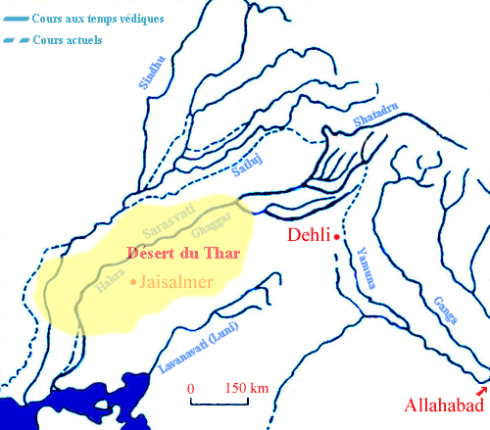 Ganges river systems, that once flowed into the old bed of now dry Ghaggar.
Ganges river systems, that once flowed into the old bed of now dry Ghaggar.
So what caused the drying up of Ghaggar or the historic Saraswathi? Sometime between the 6000 and 4000 years, due to tectonic movements the rivers Yamuna and Sutlej that were the main feeders for Saraswathi changed course.
The glacier fed Sutlej moved westwards, and started flowing into the Indus river. The other glacier fed tributary of Saraswati, the Yamuna started flowing eastward, into the Ganga river instead of Saraswathi. These events thus deprived Saraswathi a perennial water source.
Probably to support this movement of Yamuna is the common belief held in India even today that the river Saraswathi flows as an invisible river, and joins the Ganga and Yamuna at their confluence at Prayaga (Allahabad).
With this river migration understood, we can easily understand why there are far greater number of archaeological sites in the desert along the dry Saraswathi river compared to the Indus river valley. When the rivers migrated, the people living in the Saraswathi river area had to move to newer locations, and they did so. There is no need to bring in any fictitious “nomads from central Asia” to describe a bloody and sudden ending to the civilization. Indeed a study of later archaeological sites shows that several aspects of the these sites were adapted there as well.
Today, the river Sarswathi may flow from the Himalaya all the way to the ocean. It may have become just a small monsoon rivulet. Or if you go by the popular mindset, the river Saraswathi might have become invisible. But the culture of the people lived on it’s banks is still alive and well! For example, its very easy to find artwork from this civilization, that looks almost the same as some of the artworks created by current day craftsmen and artists! This is but one of the many aspects where such parallels can be drawn.
Given all these facts, it truly befits to call this as the Saraswathi-Sindhu civilization rather than Indus Valley civilization or the Harappa civilization!
-neelanjana
(All photo credits belong to their respective copyright holders)
(p.s: Enough material is available on the Internet about the Saraswathi-Sindhu civilization. Then question may arise why this post 🙂 This was a speech I gave at my Toastmasters Club as part of the “Speaking to Inform” advance speaking manual. The project was : The Speech to Inform)
Today is the fifth day of Navaratri. The composition of Swati Tirunal, sung at Navaratri Mandapam tonight is ‘janani mAmava mEyE’ in the stately Bhairavi raga. This raga is somewhat special in the sense it is to be found only in Karnataka sangeetha, and no similar counterpart in the Hindustani, or in other melodic music systems of the world.
Here is a YouTube clip of this composition:
Today you’ll listen to a rare composition of Muttuswamy Dikshita on Saraswati. The youngest of the trinity, Muttuswamy Dikshita (1775 AD – 1835AD) is known for his strict adherence to traditions. Thanks to him, today we have compositions in many ragas which would have been mere names found in texts.
Muttuswamy Dikshita is also known for weaving the name of the raga into his compositions very neatly. And today’s example is one such.
Listen to ‘kalaavati kamalaasana yuvati’ in , need less to say I guess, raaga ‘kalaavati’ 🙂
The composition is in Samskrta, and is in praise of Goddess Saraswati. Click here to see the saahitya of this song.
This raga, in my opinion, has one of the toughest swara intervals making it a tight rope walk. So there is no wonder not many composers have tried to compose in this raga. As a side note, there are two other ragas that go by the same name Kalavati – one in hindustani, and the other in karnataka sangeetha; but either of these have nothing to do with the raga in which ‘kalaavati kamalaasana yuvati’ is set. So much for naming in Indian music!
-neelanjana

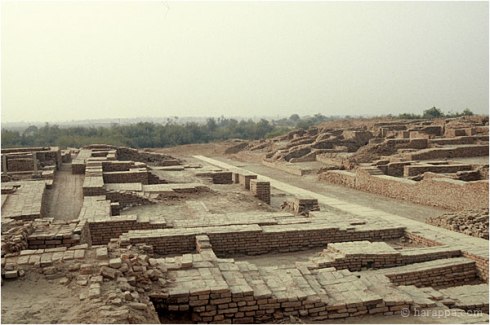
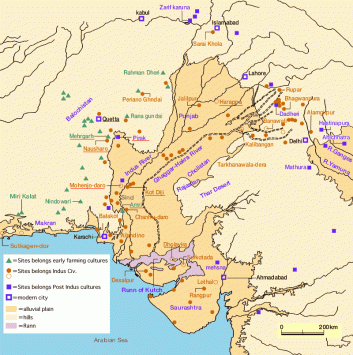
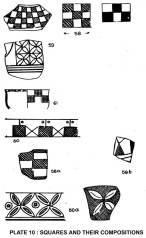
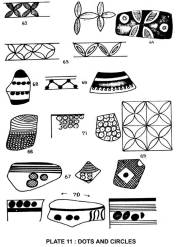


ಇತ್ತೀಚಿನ ಟಿಪ್ಪಣಿಗಳು